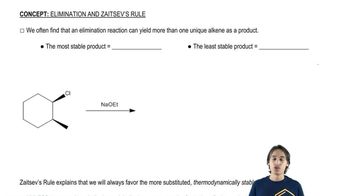a. What is the major product obtained when each of the following compounds undergoes an E2 reaction with methoxide ion? Show the configuration of the product.
b. Does the product obtained depend on whether you start with the R or S enantiomer of the reactant?
3.






